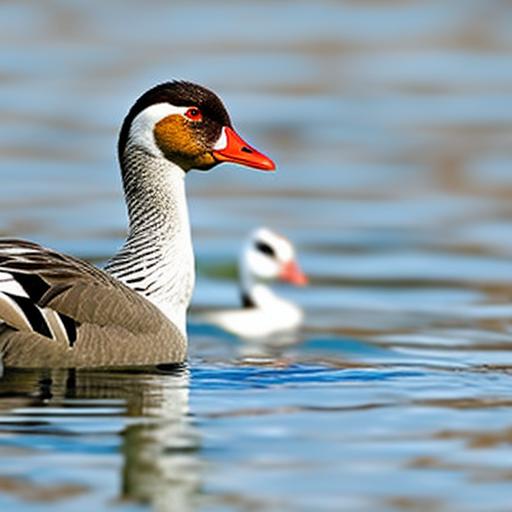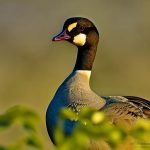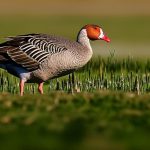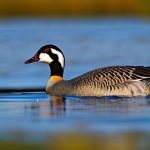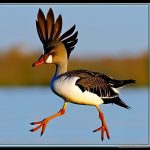Domestic geese, also known as domesticated geese, are a species of waterfowl that have been bred and raised by humans for thousands of years. They are a popular choice for small-scale farming and homesteading due to their hardy nature, ease of care, and the many benefits they provide. There are several different breeds of domestic geese, each with its own unique characteristics and qualities. From the majestic Toulouse to the charming Chinese, domestic geese come in a wide variety of sizes, colors, and temperaments, making them a versatile and valuable addition to any farm or homestead.
Understanding the History and Origins of Domestic Geese
The domestication of geese can be traced back to ancient times, with evidence of their presence in the Nile Valley dating back to at least 4,000 years ago. Geese were highly valued by the ancient Egyptians for their meat, eggs, and feathers, and were often depicted in art and hieroglyphics. Over time, domestic geese spread to Europe and Asia, where they became an important part of agricultural and cultural life. Today, domestic geese are found all over the world, and their history and origins continue to be a source of fascination for researchers and enthusiasts alike.
Exploring the Different Types and Varieties of Domestic Geese
There are many different breeds and varieties of domestic geese, each with its own unique characteristics and qualities. Some of the most popular breeds include the Toulouse, Embden, Chinese, and African. The Toulouse is a large, heavy breed known for its calm and gentle nature, while the Embden is prized for its white plumage and excellent meat production. The Chinese and African breeds are smaller and more agile, making them well-suited for foraging and pest control. In addition to these well-known breeds, there are also many lesser-known varieties of domestic geese, each with its own special attributes and appeal.
Learning about the Physical Characteristics and Behaviors of Domestic Geese
Domestic geese are known for their distinctive physical characteristics, including their long necks, webbed feet, and graceful, waddling gait. They come in a wide range of colors and patterns, from pure white to mottled gray and everything in between. In addition to their physical appearance, domestic geese are also known for their unique behaviors and social dynamics. They are highly social animals that form strong bonds with their flock mates, and are known for their intelligence, curiosity, and strong sense of loyalty. They are also excellent foragers and can be trained to perform a variety of tasks, making them a valuable asset on the farm or homestead.
The Role of Domestic Geese in Agriculture and Conservation
Domestic geese play a vital role in agriculture and conservation, providing a valuable source of meat, eggs, and feathers, as well as serving as effective pest controllers and weeders. They are also important for their role in preserving and promoting genetic diversity within the species, as many domestic geese breeds are at risk of extinction due to declining populations and loss of habitat. By raising and breeding domestic geese, farmers and conservationists can help to ensure the survival of these unique and valuable birds for future generations.
Caring for Domestic Geese: Housing, Feeding, and Health Considerations
Caring for domestic geese requires careful attention to their housing, feeding, and health needs. Geese are hardy birds that can thrive in a variety of environments, but they do require adequate shelter from the elements, protection from predators, and access to clean water and nutritious feed. They also require regular veterinary care to prevent and treat common health issues such as respiratory infections, parasites, and injuries. By providing proper care and attention, domestic geese can live long, healthy, and productive lives, providing a valuable source of food, income, and companionship for their human caretakers.
Breeding and Rearing Domestic Geese: Tips and Best Practices
Breeding and rearing domestic geese requires careful planning, attention to detail, and a good understanding of the breeding process. Geese are seasonal breeders, typically laying their eggs in the spring and summer months. They require a quiet, secluded nesting area and a diet high in protein and calcium to support healthy egg production and development. Once the eggs hatch, the goslings require warmth, protection, and a balanced diet to ensure their healthy growth and development. By following best practices for breeding and rearing, farmers and homesteaders can raise healthy, productive geese that will provide a valuable source of meat, eggs, and feathers for years to come.
The Cultural and Symbolic Significance of Domestic Geese in Different Societies
Domestic geese have played a significant role in the cultural and symbolic traditions of many different societies throughout history. In ancient Egypt, geese were revered as symbols of fertility, protection, and loyalty, and were often associated with the goddess Isis. In China, geese are considered symbols of marital fidelity and family harmony, and are often depicted in art and literature as symbols of good fortune and prosperity. In Europe, geese have been a popular subject in folklore and fairy tales, often representing wisdom, courage, and loyalty. Today, domestic geese continue to hold a special place in the hearts and minds of people all over the world, serving as symbols of tradition, heritage, and the enduring bond between humans and animals.
Domestic Geese in Art, Literature, and Folklore
Throughout history, domestic geese have been a popular subject in art, literature, and folklore, serving as symbols of beauty, grace, and the natural world. In ancient Egypt, geese were often depicted in paintings, sculptures, and hieroglyphics, symbolizing fertility, protection, and the cycle of life. In European folklore, geese are often portrayed as wise and loyal creatures, serving as guides and protectors for the heroes and heroines of many classic tales. In modern literature and art, geese continue to be a popular subject, inspiring artists and writers to create works that celebrate the beauty and majesty of these remarkable birds.
The Future of Domestic Geese Breeds: Challenges and Opportunities
The future of domestic geese breeds faces many challenges, including declining populations, loss of habitat, and competition from other livestock species. However, there are also many opportunities for the continued success and prosperity of domestic geese, including the growing demand for sustainable, locally-raised food, the increasing interest in small-scale farming and homesteading, and the potential for geese to play a valuable role in conservation and environmental stewardship. By raising awareness of the unique qualities and benefits of domestic geese, and by promoting responsible breeding and conservation efforts, we can help to ensure a bright and prosperous future for these remarkable birds. With proper care, attention, and support, domestic geese will continue to be a valuable and cherished part of our agricultural and cultural heritage for generations to come.
Meet Walter, the feathered-friend fanatic of Florida! Nestled in the sunshine state, Walter struts through life with his feathered companions, clucking his way to happiness. With a coop that’s fancier than a five-star hotel, he’s the Don Juan of the chicken world. When he’s not teaching his hens to do the cha-cha, you’ll find him in a heated debate with his prized rooster, Sir Clucks-a-Lot. Walter’s poultry passion is no yolk; he’s the sunny-side-up guy you never knew you needed in your flock of friends!

